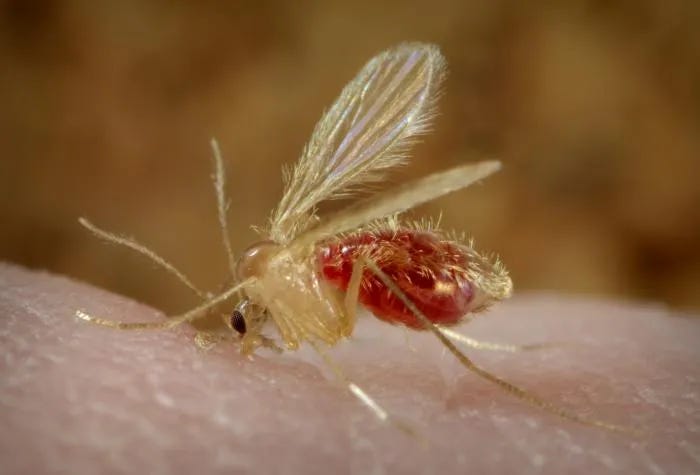Leishmaniasis outbreak worries indigenous communities in Cesar Department, Colombia
Farmers from Yukpa indigenous communities settled in the foothills of the Serranía del Perijá, in the municipalities of Agustín Codazzi and La Paz, Cesar Department, in northern Colombia, are experiencing a serious public health problem due to an outbreak of leishmaniasis that puts the inhabitants and the productive activity of the area at risk.
In the department of Cesar, the Ministry of Health reports 288 cases, of which 101 correspond to indigenous patients.
Gina Paola Sánchez, Departmental Health Secretary explained that the towns most affected by this disease in Cesar are Agustín Codazzi with 63% of the cases, La Paz 9.2 percent, Valledupar 8%, Pailitas 4.4%, San Diego and San Martin 3.5 percent, San Alberto 3.1%, Pueblo Bello 2.6 percent and Aguachica 1.3%, to whose territories specialized teams are being transferred to counteract the disease.
Due to this epidemiological panorama, the Departmental Health Secretariat implemented a comprehensive action plan to control an outbreak of leishmaniasis that occurred in the Yukpa indigenous communities of Agustín Codazzi and La Paz.
The actions implemented include the intervention of health professionals to provide timely medical care, who have reached the affected communities in order to make diagnoses, deliver treatments and provide medical assistance to those affected, guaranteeing access to the necessary medicines to combat the disease.
Community action has also been carried out, consisting of educational sessions focused on the prevention of leishmaniasis, teaching communities how to avoid mosquito bites, improve hygiene conditions and maintain healthy environments.
As a complement to these actions, the staff of the Ministry of Health has traveled to the Las Vegas and Hoyo Caliente lower areas, in the Agustín Codazzi municipality, to deliver mosquito nets to the communities, fumigate and control vectors, where they have also captured vectors that have been taken to the Public Health Laboratory for their respective study.
Chemical control has been carried out in homes, starting in Agustín Codazzi and continuing through the Serranía del Perijá; in addition, capacity building has been provided to security guards from local Health Departments to ensure timely diagnosis and treatment, and training has been provided to basic health teams so that they are prepared to actively search for patients with leishmaniasis.
Support this newsblog with a paid subscription or with a cup of coffee at ko-fi
Leishmaniasis is not a single disease, but a group of syndromes due to a variety of species of this parasite. They affect different populations and are related to a characteristic vector, the sandfly.
The disease can range from asymptomatic infections to those causing significant illness and death. Disease can appear on a spectrum from a single skin ulcer to destructive lesions of the face to terminal organ disease.
Leishmaniasis is found in 88 countries worldwide and is broken down between Old World and New World.
Subscribe to Outbreak News TV on YouTube
Old World leishmaniasis is primarily found in parts of Asia, East and North Africa, Southern Europe and the Middle East.
New World leishmaniasis occurs from northern Mexico to northern Argentina, with rare cases reported in parts of Texas and Oklahoma. In South America it is not found in Chile or Uruguay.
The vector for this parasite is a phlebotomine sandfly. There are a few different species implicated depending on the part of the world.
Sandflies are very small (about 1/3 the size of a mosquito) and make no noise when flying. There bites can sometimes be painless; because of these reasons, many people have no idea they were bitten.
Even one bite of a sandfly can transmit disease, so travelers on short trips can still get infected.
When the female sandfly takes a blood meal it injects the parasite into the wound. Macrophages pick up the parasite and here they multiply until the cell bursts from overcrowding. The parasite goes on to infect more macrophages.
Some of these cells get carried to organs of the body including the liver, spleen and the bone marrow.
There are several species of Leishmania that cause disease in humans. The most common are Leishmania donovani (kala-azar), L. tropica (Baghdad boil), and L. braziliensis (espundia).
To prevent sandfly bites, you should use insect repellents and clothing that covers the entire body, place wire mesh on doors and windows, and use mosquito nets.





